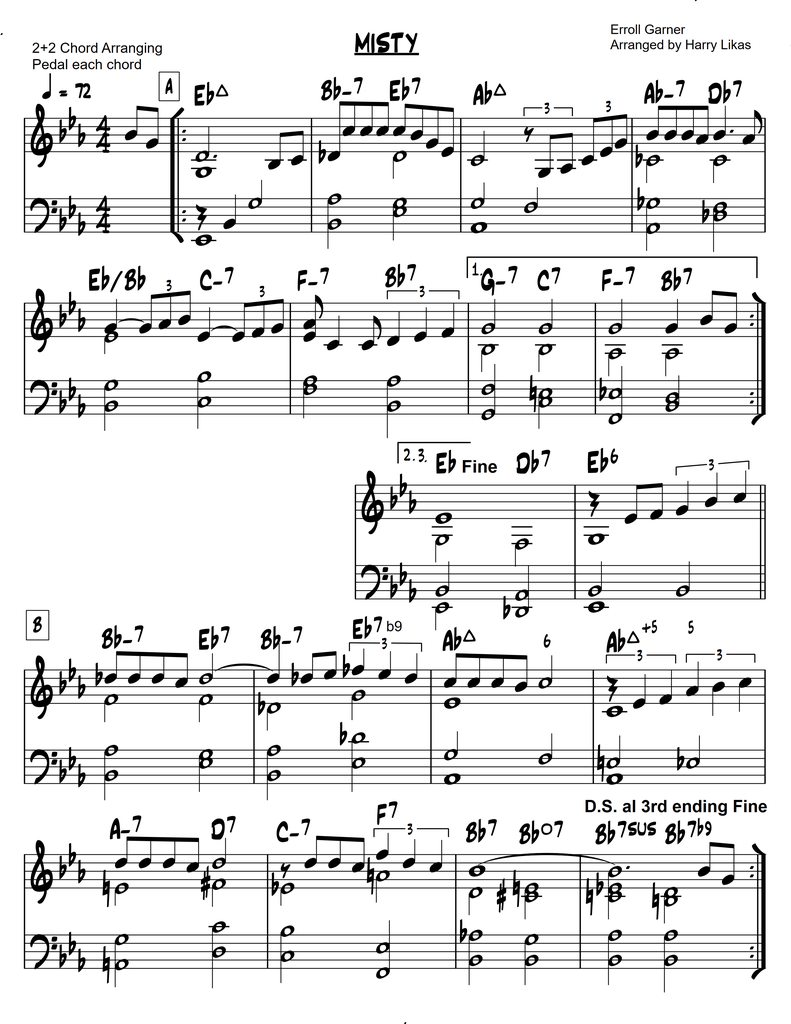I’ve arranged he classic standard “Misty” for solo piano, using my 2+2 basic chord voicing method.
[https://harrypiano.com/wp-content/uploads/2025/05/Misty.22.Eb_.png]
"Misty" for piano
The 2+2 chord voicing approach is a practical system for pianists to build harmonies directly from lead sheets. It keeps things simple by assigning each hand a clear role. The left hand supplies the harmonic foundation—usually playing the root and 7th or the root and 3rd (occasionally the root and 5th). The right-hand thumb fills in the remaining essential chord tone, either the 3rd or 7th (whichever isn’t already covered by the left hand), while the rest of the right-hand fingers play the melody on top.
This setup promotes smooth voice leading, creates a balanced sound, and works well in both solo and group settings. When it’s time to solo, a bebop jazz pianist can continue using the left hand as in the arrangement—alternating between root and 7th or root and 3rd voicings—to provide a strong foundation for exploring more advanced spread voicings. As players grow more comfortable with 2+2 chord voicings, they can enrich their harmony with additional notes, increase left-hand rhythmic motion, and incorporate melodic embellishments to develop their own unique style.
Please check out my 1,100 “2+2” Jazz Piano Arrangements of Standards and 50 Tutorials at www.Patreon.com/HarryLikas
I was the technical editor for Mark Levine’s The Jazz Theory Book and a contributor to The Jazz Piano Book.